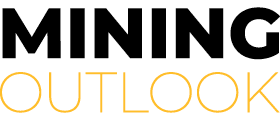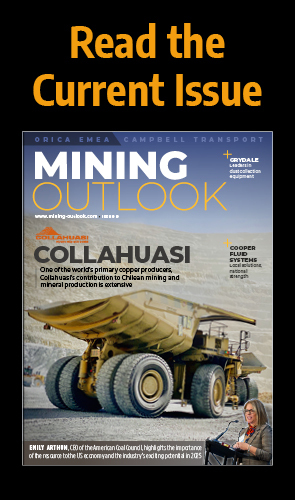PEOPLE-CENTRIC SINCE 1996
During 2022, Kansanshi’s main objectives are to push its current operations to 29 Mtpa to compensate for dropping sulphide ore grades and diminishing oxide and mixed resources as the open pit deepens, and continuing discussions with key stakeholders to pave the way for an expansion to the current operation, to double annual mined volumes and process throughput.
“First Quantum has invested in the development of skills and its people from its inception in 1996,” Mukutuma continues. “For the said growth to be sustained, it must be underpinned by employees and the right leadership; people that understand the First Quantum values of ‘Bolder, Smarter, Driven and Together’.
“First Quantum runs trades and apprentice training programmes, local and international graduate programmes, various specialist and professional development programmes for employees and a CEO Programme, the latter of which is a leadership development programme with First Quantum’s CEO being the principal mentor.
“A decision was made during 2020 to create a programme to develop ‘ready now’ leaders using the CEO Programme model with the principal mentor being the General Manager.
“The programme is called the General Manager Programme (GMP). The first cohort of GMP’s have just completed the 12-month programme with excellent results; six ‘ready now’ leaders from the Human Resources, ICT, mechanical, process engineering, and metallurgy disciplines. The next cohort will start in April 2022.”

SAFETY FIRST
This dedication to training and developing its employees and management is a key part of Kansanshi’s overall business practice, to ensure the best for both the company and the people involved. This is due to First Quantum’s overarching safety-centric values that echo throughout its companies and their divisions.
First Quantum’s THINK! Safety programme is a practical, sensible approach to risk management, all framed within the company’s Health and Safety Management System, which conforms to ISO 45001 standard.
“It features sensible rules without excessive red tape,” explains Teza Kasengele, Safety Manager at Kansanshi. “We avoid unnecessary bureaucracy, and we vigorously defend against the false sense of security that comes from having blanket rules and indiscriminate procedures. Whilst we insist on key safety rules in specific environments, we find that overall safety improves when we teach workers to assess their environment, identify hazards, take action using their own critical judgement and support their colleagues in the same way.
“The THINK! Safety programme started at Kansanshi as an off-shoot of crew resource management (CRM) – the famously successful aviation industry safety programme that has been adopted and adapted for use in many different industrial sectors, including healthcare, firefighting and shipping handling. CRM training focuses on non-technical skills (teamwork, decision making, and communication) to improve situational awareness and problem-solving, which all help to better safety performance. In our early trials, we found CRM helpful but lacked a mining-specific focus. So, we have developed our own, First Quantum Safety Programme.”
The THINK! Safety programme is incorporated into the company’s Health and Safety Management System and has been implemented at all of its sites. First Quantum has embedded the Health and Safety Management System through the formal training of employees and contractors, practical on-the-job training with on-the-job follow-ups and extensive workplace communications and employee engagement.
“We want everyone who works at our sites to go home safely to their families at the end of every shift,” Kasengele says. “We also want them to stay safe at home. The next step for THINK! Safety is to roll out the concept to the communities located near our operations to improve safety and reduce accidents in homes, farms, businesses and schools.”
THE FOUR PILLARS
Kansanshi’s four Safety Pillars embody the company’s ethos and drive towards ensuring the highest level of personal safety for each of its employees and associated workers.
Pillar One – Prepare
Kansanshi’s health and safety policy is aimed at preparing employees and business partners to uphold their occupational health as well as remaining safe both at work and elsewhere. Employees and business partners are also prepared to keep the environment and equipment safe in their execution of duties. At Kansanshi, this preparation to work safely is mainly achieved in four separate ways.
“The first is through training,” Kasengele elaborates. “Both employees and business partners operating on site undergo various stages of training, depending on their roles, to ensure that they are competent to work safely before they can be allowed to work at Kansanshi.
“This is followed by understanding the work processes. Standard operating procedures (SOPs) have been developed for critical tasks based on their hazard potentials and how such hazards can be prevented, dealt with or how their impacts can be minimised by following outlined steps in the execution of such tasks or work processes.”
The third of these ways is hazard identification. All personnel on the mine, regardless of their roles or work location, are encouraged to identify and report hazards so that they can be eliminated before they result in any harm. Examples of methods used to identify workplace or potential hazards are Visible Felt Leaderships (VFLs), Near-miss Incidents, Safety Inspections and Hazard logbooks.
Lastly, internal and external Health and Safety Management System audits are a regular feature of important annual activities at Kansanshi.
Pillar Two – Prevent
Once personnel have been prepared to work safely, preventative measures are used to prohibit the identified hazards from resulting in or causing harm. Preventative measures are aimed at eliminating known or anticipated hazards from coming into contact with personnel, the environment or equipment. Signage, waste and hazardous material management are some of the principal methods used in the prevention pillar. In addition, risk assessments, which are aimed at identifying preventative methods to address hazards specific to the task at hand, are conducted on all critical tasks before such jobs can be allowed to commence or proceed.
Pillar Three – Protect
Like most mining environments in the world, Kansanshi employees and business partners have to deal with various hazards in their different lines of duty, as is the nature of the mining industry.
“Having identified these hazards in the first pillar, procedures and policies have been formulated to protect personnel who work directly with such hazards (which cannot be avoided or prevented),” Kasengele tells us. “Some of the most common protective measures are appropriate personal protective equipment (PPE), machine guard installations, work rotations to limit exposure and ergonomic studies and guidelines.”
Pillar Four – Respond
Kansanshi has implemented various methods and channels to respond to health, environmental and safety incidents which may occur on-site or involve Kansanshi employees and business partners. Foremost of these methods is the establishment of a well-equipped hospital (such as Kansanshi Mine Hospital) to which all employees and their families have access, including Kansanshi’s contractors. In addition, a well-equipped emergency response team has been set up to respond to all incidents involving personnel, the environment and equipment.
Incidents are also managed through rigorous incident investigations which are aimed at developing or enhancing the preparatory, preventative and protective pillars.




























